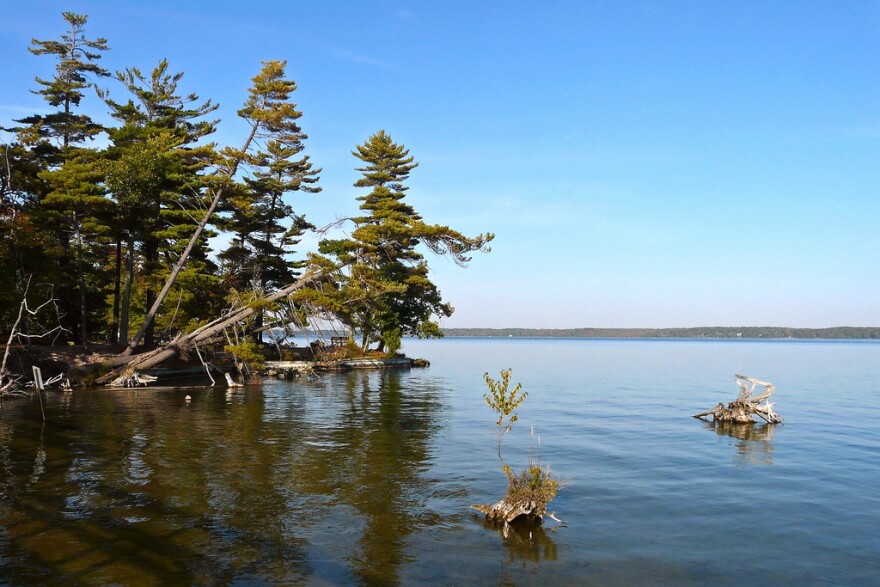For years Lake Erie has been the poster child in the Great Lakes for the problem of toxic algae.
More recently, though, the problem has been showing up farther north around Lake Michigan.
Figuring out the causes of the algal blooms can be tough since watersheds are complex systems but some environmentalists are pointing the finger at corn. It’s a valuable cash crop today and could be a growing part of the farm landscape in the Great Lakes in the years ahead.
Algal bloom hits Mason County
Debra Hulst‘s home is on the north shore of Hamlin Lake, across from Ludington State Park. Her backyard is Nordhouse Dunes, the only designated wilderness in Lower Michigan. In 2012, her little corner of paradise was blanketed with blue green algae.
“We had to go down past the dunes toward the state park before you could get out of it. By the middle of July it stunk so bad, it smelled like raw sewage.”
Hulst has been coming to the lake for more than 50 years and she never saw anything like it. She did a little research and discovered this kind of algae can make people sick and kill dogs. She figured there was no way her grandchildren could play in the water and not drink a little.
“So we couldn’t swim.”
The outcry in 2012 set the Hamlin Lake Preservation Society into action to figure out why the lake would explode with blue green algae. Their tentative conclusion is that the problem is farm runoff. Fertilizer put on farm fields can wash into nearby lakes and the phosphorus in that fertilizer winds up feeding algae instead of corn or some other crop.
Old debate
Tension between farmers and lakefront property owners is nothing new. Bill Stakenas, owner of Stakenas Farms near Freesoil, says people are barking up the wrong tree if they want to blame farmers. He says the amount of fertilizer going on fields is far less in recent years because it’s expensive.
“We put what the plant needs where the plant needs it so it gets used.”
Stakenas Farms has a state environmental certification for good soil practices, like vegetation buffers that filter water flowing from a field. Bill Stakenas says the discussion about algae has been going on for 20 years and farmers have only improved their practices during that time.
“There’s fewer farms and the farms that are left are doing an outstanding job.”
Corn boom
More and more land is being planted around here, however, in some cases fields that hadn’t been tilled since Bill Stakenas’s father was a kid. Many of these acres are being planted with corn. Mason County grew almost a million more bushels in 2012 compared to the years 2008 and 2009.
Corn production is up all over because the price is high and that trend worries environmentalists. Corn needs lots of phosphorous, especially in sandy soil that is more common up north. Since it is harvested later in the year, there is less chance that a cover crop will go on the field to hold the soil in place.
Kevin Fermanich teaches environmental science at the University of Wisconsin—Green Bay, and has been studying a dead zone there. He says dairy farmers will put manure onto bare fields in the fall.
“If we have more out on the landscape then the likelihood of some of it being lost, leaking from the landscape is the way I refer to it, through rainfall is greater.”
The price of corn is dropping and farmers are expected to plant less next year but in the long term the Great Lakes region could see more corn production. Changes in weather patterns and new plant hybrids that can grow in shorter seasons are pushing the Corn Belt north. Last year the head of agri-business giant Cargill told Bloomberg News that investments in silos and rail cars are moving north, where they expect lots of corn to be grown in the future.


